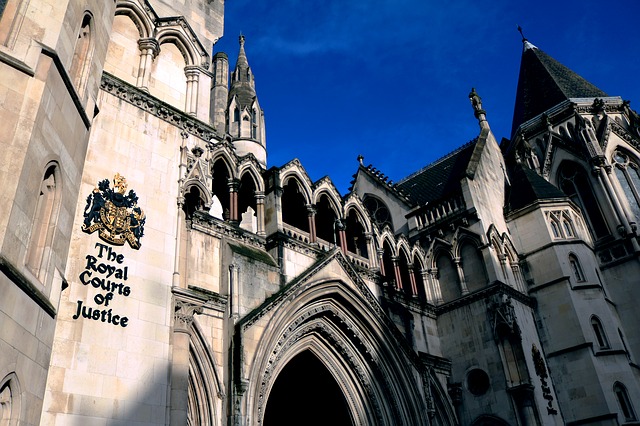Blog: Limitation in Scottish abuse claim considered by High Court
 The effect of the Limitation (Childhood Abuse) (Scotland) Act 2017, and whether a claim for historic abuse in Scotland should be allowed to proceed in the English courts, was considered by the High Court in its recent judgment, JXJ v The Province of Great Britain of the Institute of Brothers of the Christian Schools (the de la Salle Brothers). DAC Beachcroft’s Andrew Ireland, Adrienne Shepherd and Andrea Ward explain the details of the case.
The effect of the Limitation (Childhood Abuse) (Scotland) Act 2017, and whether a claim for historic abuse in Scotland should be allowed to proceed in the English courts, was considered by the High Court in its recent judgment, JXJ v The Province of Great Britain of the Institute of Brothers of the Christian Schools (the de la Salle Brothers). DAC Beachcroft’s Andrew Ireland, Adrienne Shepherd and Andrea Ward explain the details of the case.
The claimant was sexually abused between the ages of 10 and 12 whilst a boarder at St Ninian’s school in Scotland, a school to which juvenile offenders and children who were considered to be in need of care and protection were sent. He brought the proceedings in June 2018 having given notice of the claim in July 2014, both dates after he turned 18.
Although the incidents occurred in Scotland, the action was raised in England. After argument as to whether English or Scots law should apply, it was decided that Scots law would apply; expert evidence in the form of a report from a Scottish QC was relied on by the court.
But for the enactment of the Limitation (Childhood Abuse) (Scotland) Act 2017 the claimant would have had to rely on the general discretion conferred by s.19A of the Prescription and Limitation (Scotland) Act 1973 which gives an equitable discretion to allow the action to proceed.
The court noted that in s.19A of the 1973 Act, unlike the equivalent legislation in England and Wales, the factors relevant to the exercise of power are not statutorily prescribed. The report from the Scottish QC advised that each jurisdiction had referred to the other’s case law in the developing law of limitation. The courts of England and Wales have also regarded decisions on s.19A of the 1973 Act as relevant when applying s.33 of the 1980 Act, for example in Catholic Child Welfare Society (Diocese of Middlesbrough) v CD.
The 2017 Act, in general, disapplied limitation in all cases of childhood abuse two exceptions were provided. First s.17D required the defender to establish that it is not possible for a fair hearing to take place. Second, where as a result of the operation of the Act (a) the defender would be substantially prejudiced were the action to proceed, and (b) having had regard to the pursuer’s interest in the action proceeding, the court is satisfied that the prejudice is such that the action should not proceed.
The issue for the High Court, applying Scots Law as a foreign law, was how that provision should be applied to the facts of the case. In doing so, the court has provided some useful guidance which may in turn be considered by the Scottish courts.
Further guidance was, by the date of the trial, also available from the first reported Scottish case, LM v DG’s Executor a case in the Sheriff Court. The sheriff allowed the case before her to proceed as she was unable to conclude that the trial would “inevitably” be unfair. Although the perpetrator had died, a record of his evidence had been preserved and each of the pursuers’ evidence could be tested against their statements and possibly against each other’s accounts.
In The de la Salle Brothers, Mr Justice Chamberlain allowed part of the claimant’s case to proceed, ruling as follows:
(a) In cases to which s.17A of the 1973 Act applies, the disapplication of the triennium means that there is no time bar to be disapplied, no presumption that stale actions should not be brought and no onus on a claimant to demonstrate a good reason for delay in raising an action.
(b) A defender who relies on s.17D(2) bears the burden of showing that “it is not possible for a fair hearing to take place”.
(c) In assessing whether that test is met, the cases interpreting s.19A will be relevant to the extent that the reasoning in those cases turned on whether it was possible for the defender to have a fair hearing.
(d) However, caution must be exercised in adopting the reasoning in the s19A case law which turns on the application of the “real possibility of significant prejudice” as a factor in allowing time barred actions to proceed.
(e) s.17D(3) applies if the court is satisfied of two things: first, that as a result of the retrospective operation of s.17A, the defender can show that he “would be substantially prejudiced” if the action were to proceed; second, that this prejudice outweighs the pursuer’s interest in the action proceeding.
(f) This test is more stringent than the test for the exercise of s.19A as it requires the defender to show that he would be substantially prejudiced, not just a “real possibility” of that. Secondly, the prejudice has to be “substantial”, rather than merely “significant”.
(g) The second limb of s.17D(3) (that this prejudice outweighs the pursuer’s interest in the action proceeding) means that it will no longer be appropriate to focus on prejudice to the defender as a factor likely to be determinative in most cases.
(h) one of the aims of the new provisions was to relieve pursuers of the need to establish good reason for delay. Accordingly this should not form part of the balancing exercise in any case where a defender argues that substantial prejudice would be caused.
The court also heard that each of the claimant’s grounds against the alleged direct perpetrator, those with responsibility for protecting him and other, wider participants, could be dealt with separately and if necessary the claim allowed to proceed against the defendants on one ground as opposed to the others. The court, after reviewing the evidence, held that the defence had been established in respect of an individual alleged to have failed to act to prevent the abuse and other alleged participants but not the direct perpetrator.
This case offers an interesting and informative approach to the application of what is still largely untested Scottish legislation. We anticipate an increased volume of historic abuse claims in Scotland following the conclusion of the Scottish Historic Abuse Inquiry and following the introduction of Qualified One Way Costs Shifting in Scotland towards the end of this year.









